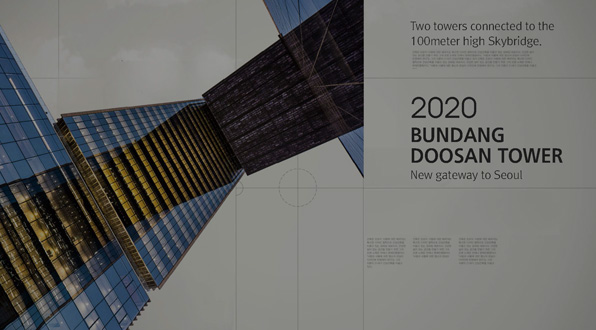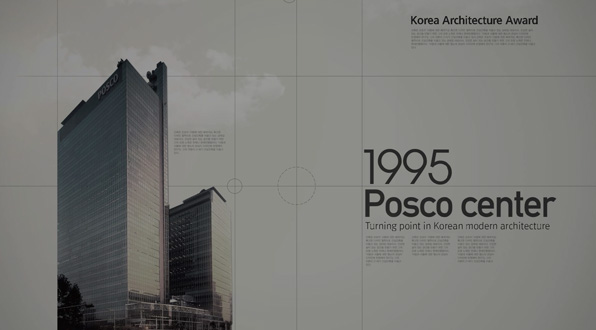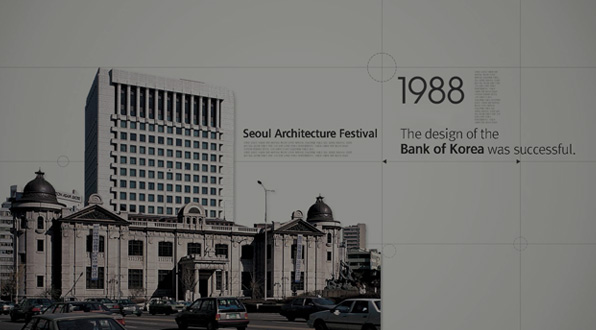HISTORY


-
Belief in the ‘Power of Architecture’
As a symbolic company of Korean architecture, celebrating its 40th anniversary in 2023, Gansam aims to become a leading company shepherding Korean architecture by quickly embracing changes in the times and society instead of settling for the achievements. By implementing rich imagination and creative design through space, we provide people with joy, wonder, and happiness in life and propose new lifestyles through various projects to embody the architecture that changes our lives and the world. Gansam is constantly thinking about solving diverse urban, social, and cultural problems through space. We are fulfilling the proper 'role of architecture' through design that does not deviate from the essence of 'happy architecture.'
-
2019
-

Established Gansam Business Insight Co., Ltd.
-
-
2018
-

Established Gansam Human Environment & Design Co., Ltd.
-
-
2013
-
Established a branch in Kazakhstan
-

The 30th anniversary of Gansam Architects & Partners
-

Published the Historical Records of Gansam Architects & Partners
-

-
The Essence of ‘Happy Architecture’
Gansam moved to a new building in Sindang-dong, Jung-gu, in 2004, by cementing its status as a peerless architectural company. It was an attempt to make a fresh start by continuing innovation based on rationality.
In 2006, we embodied and declared this vision by the title of Creativity 2010 and introduced the G.Style, Gansam' new brand as part of the vision. G.Style represents the unique design world Gansam has constructed and the philosophy and brand that will persist in the 21st century. We paved the foundation for taking a new leap forward as a global architectural design company by establishing and operating branches in Ho Chi Minh City in Vietnam, Abu Dhabi in the Middle East, Kazakhstan, and Tokyo in Japan. Gansam Architects also demonstrates its intent as a social enterprise that fulfills its given role for society, culture, and environment. -
2010
-

Changed company name to Gansam Architects & Partners Co., Ltd.
-
Declared the vision, "Creativity 2010"
-
Established branch in Abu Dhabi
-
-
2009
-
Established branch in Vietnam
-
-
2008
-

The 25th anniversary of the foundation
-
-
2007
-

Launched "G style," the Gansam Architects & Partners brand
-
-
2004
-

Completed the new office building at 407-27, Sindang-dong, Jung-gu, Seoul (Present)
-
-
2003
-

Changed company name to Gansam Partners General Architecture Co., Ltd.
-

-
Creation of an Architectural Identity
Gansam proved its true values with the POSCO Center designed in 1995. It demonstrated that a state-of-the-art smart building could be completed with purely Korean design and technology. It was praised as a turning point in modern Korean architecture. It was also when every project that we carried out was praised by critics and received various awards. We were also able to expand our business field by taking on challenges in new areas and projects such as recreation facilities apart from office buildings, which were our primary field, based on creative ideas and a challenge-oriented spirit. Gansam has initiated innovations to accommodate various changes of the times while holding fast to the basics. These wholesome steps, setting the standards for future architecture with an open perspective and mind, led to the spring of Gansam.
-
2002
-
Established an affiliated research institute, Housing Research Center
-
-
1997
-

Registered General Supervision Business License
-

-
Gansam - ‘The Inception of a Philosophy’
Gansam started from the first-generation architects who gathered for the most sophisticated project of the time, the design of the Bank of Korea Head Office. However, the foundation in 1983 was not simply an opening of an architectural firm. It was the inception of the Gansam Philosophy, which aims for the sublimation of humans, time, and space into a single value. Gansam' time-honored culture of giving considerations to others began from the creative attempt called partnership. This attempt turned Gansam into a noted architectural group and has evolved into partnerships with subcontractors and customers up until this day. During this time, Gansam moved its office from Dongsung-dong, Jongno-gu to Wonnam-dong and began to build a professional and specialized organization and system.
-
1984
-

Registered as Gansam General Architects & Partners Co., Ltd.
-
-
1983
-

Established Gansam Architectural Research Institute
-